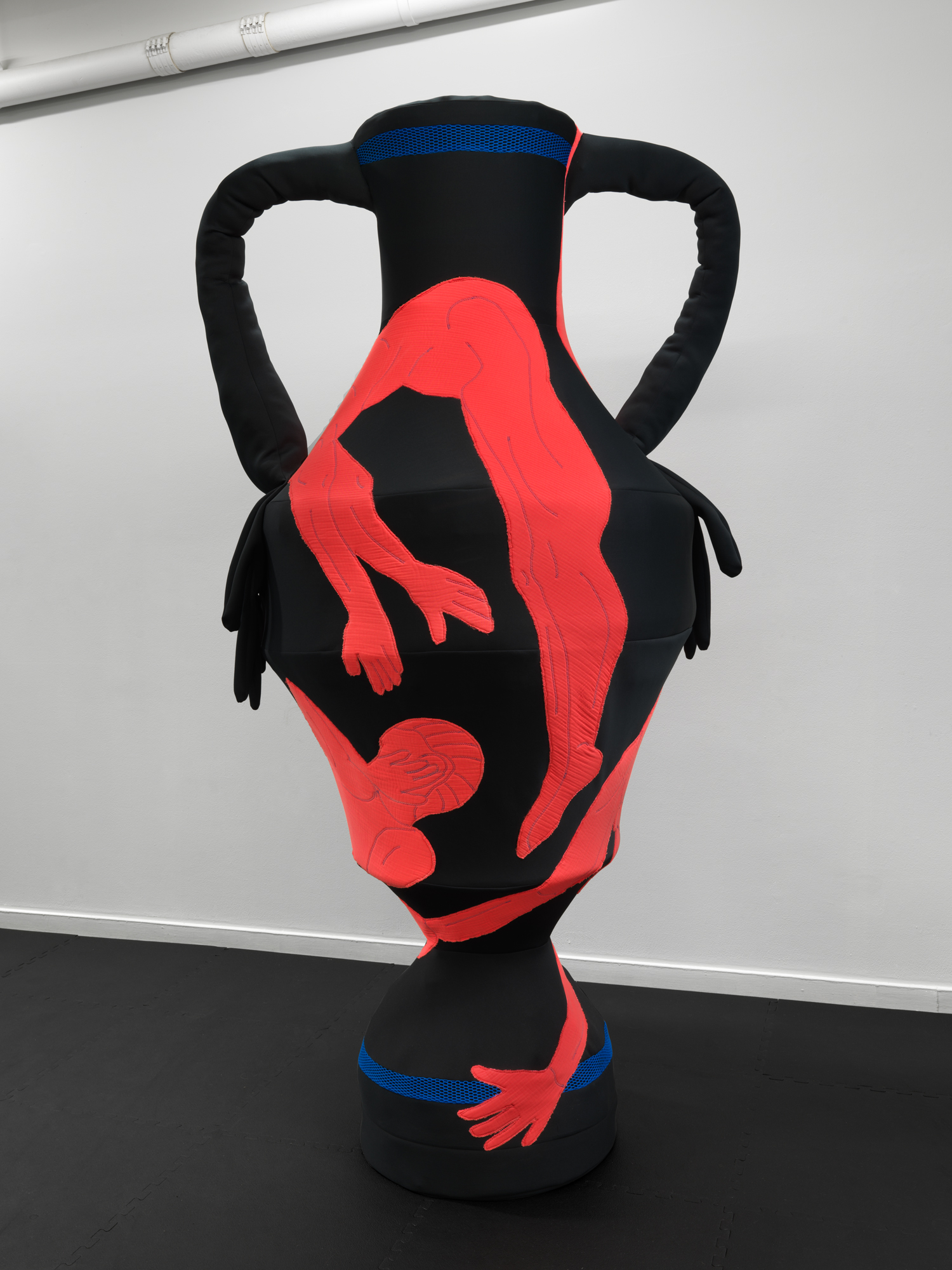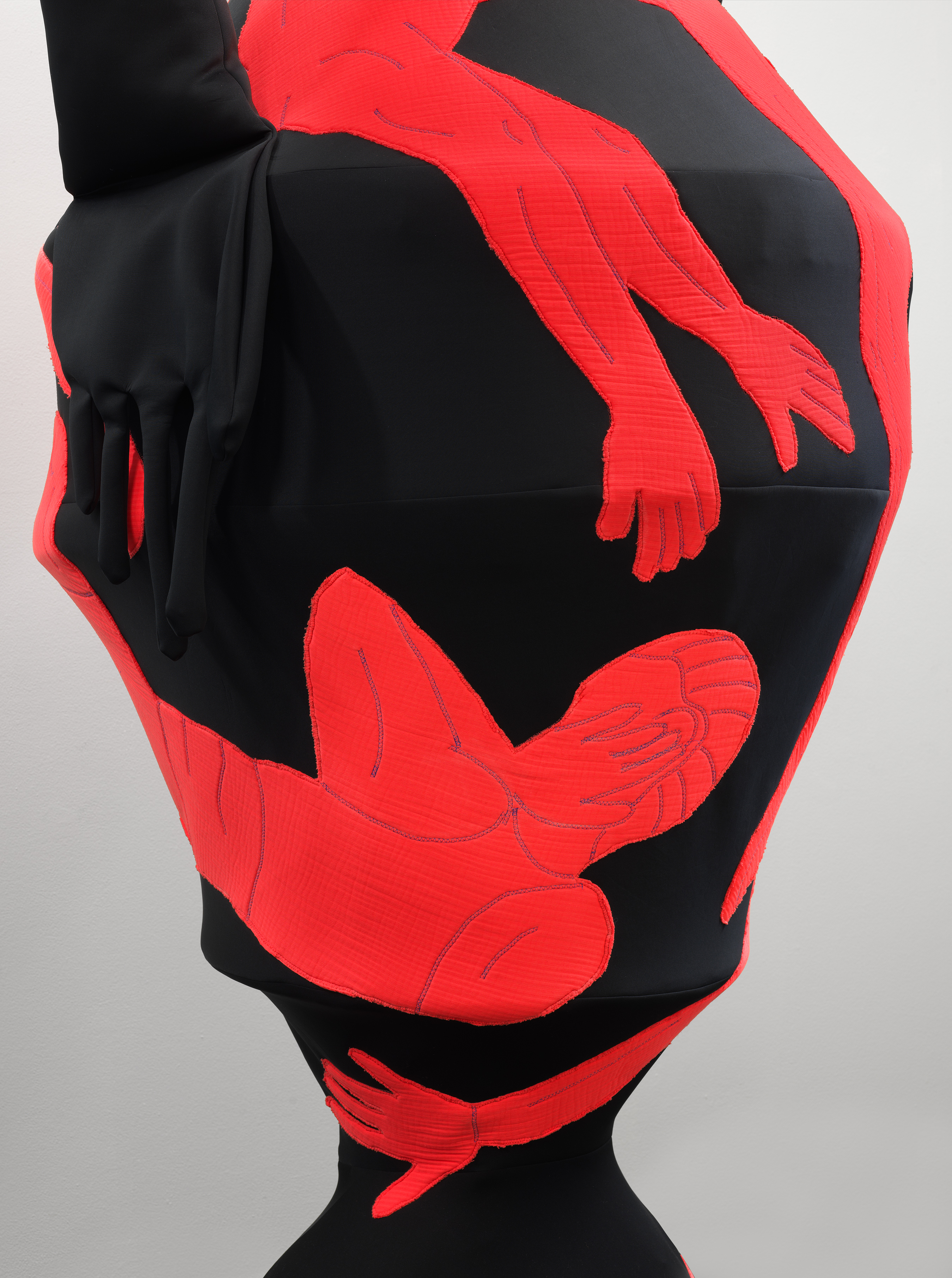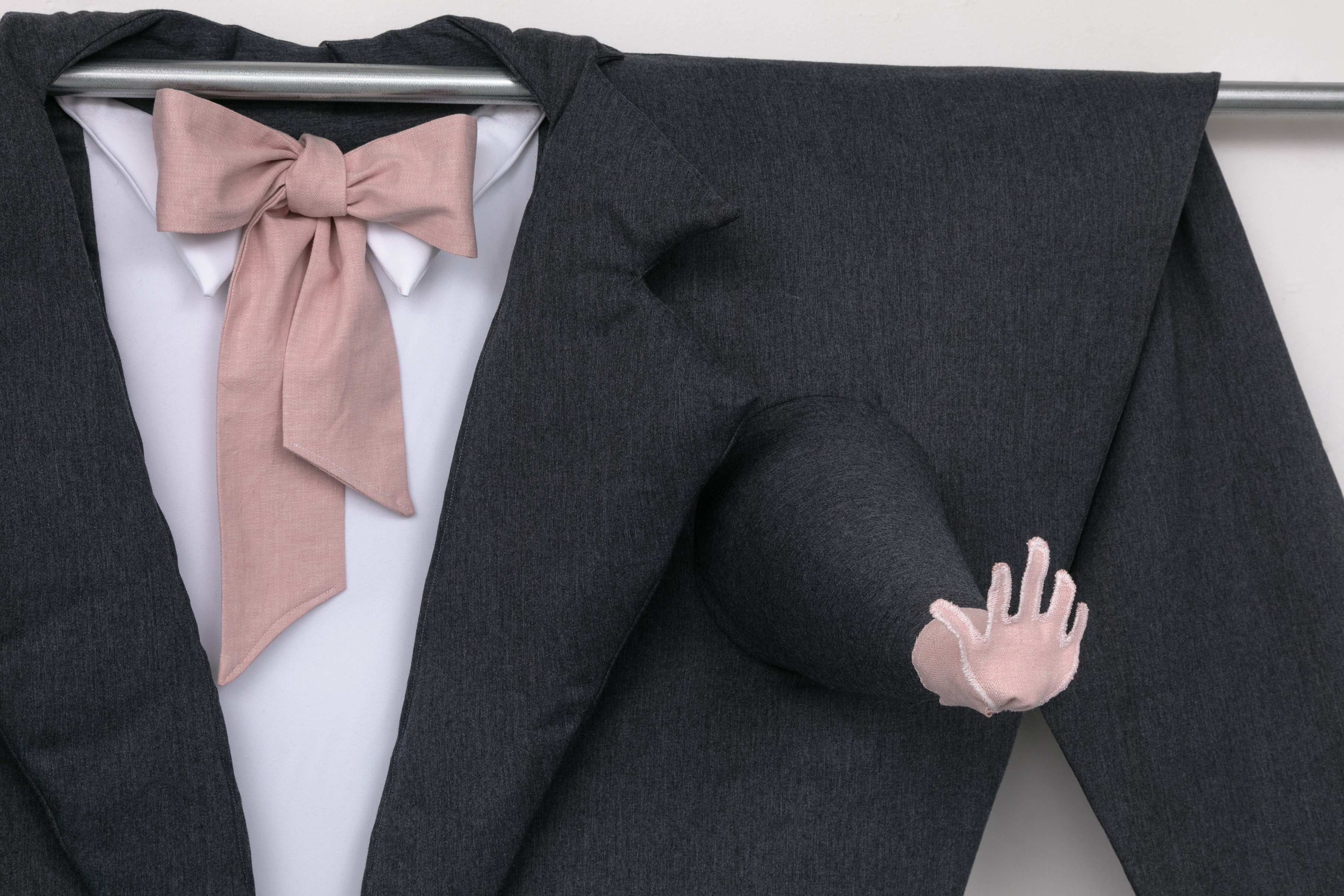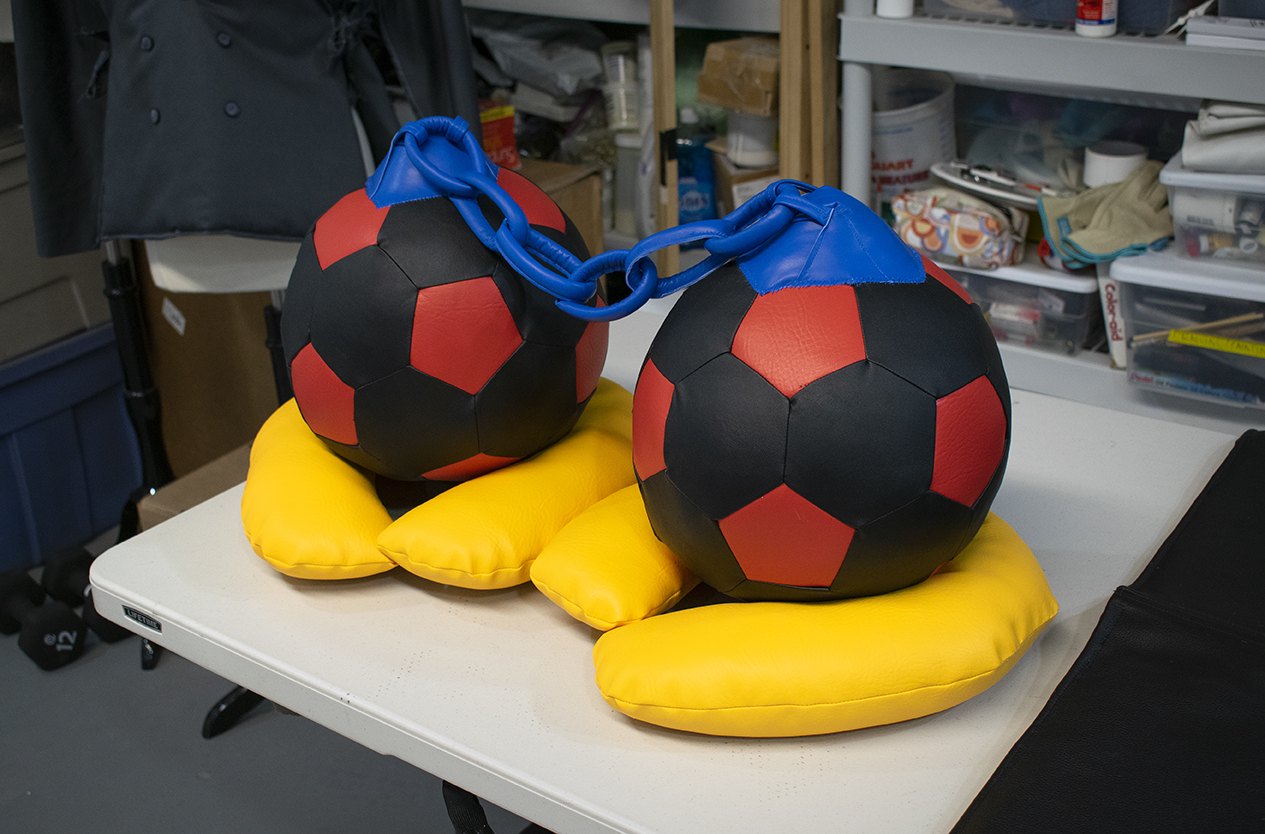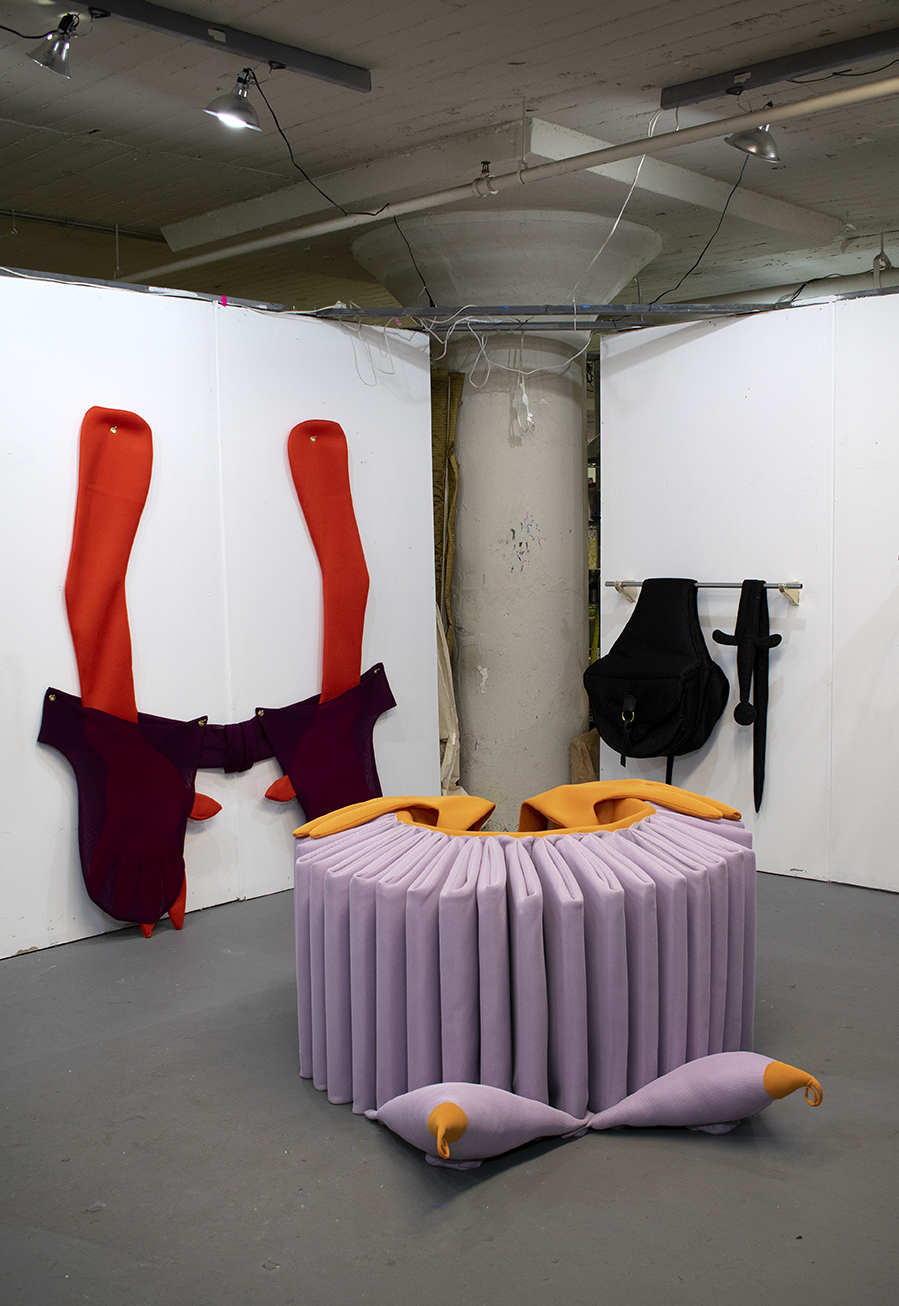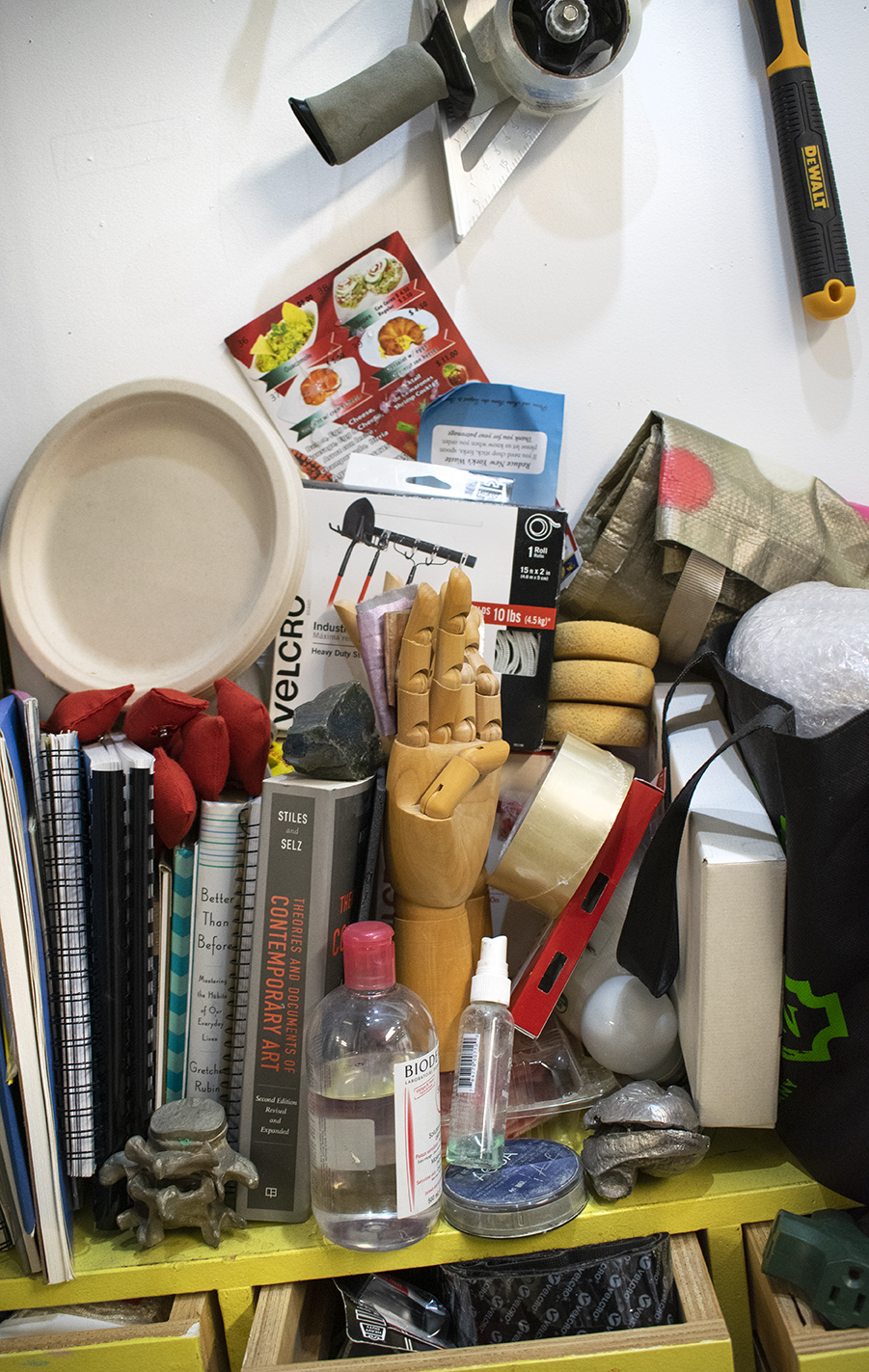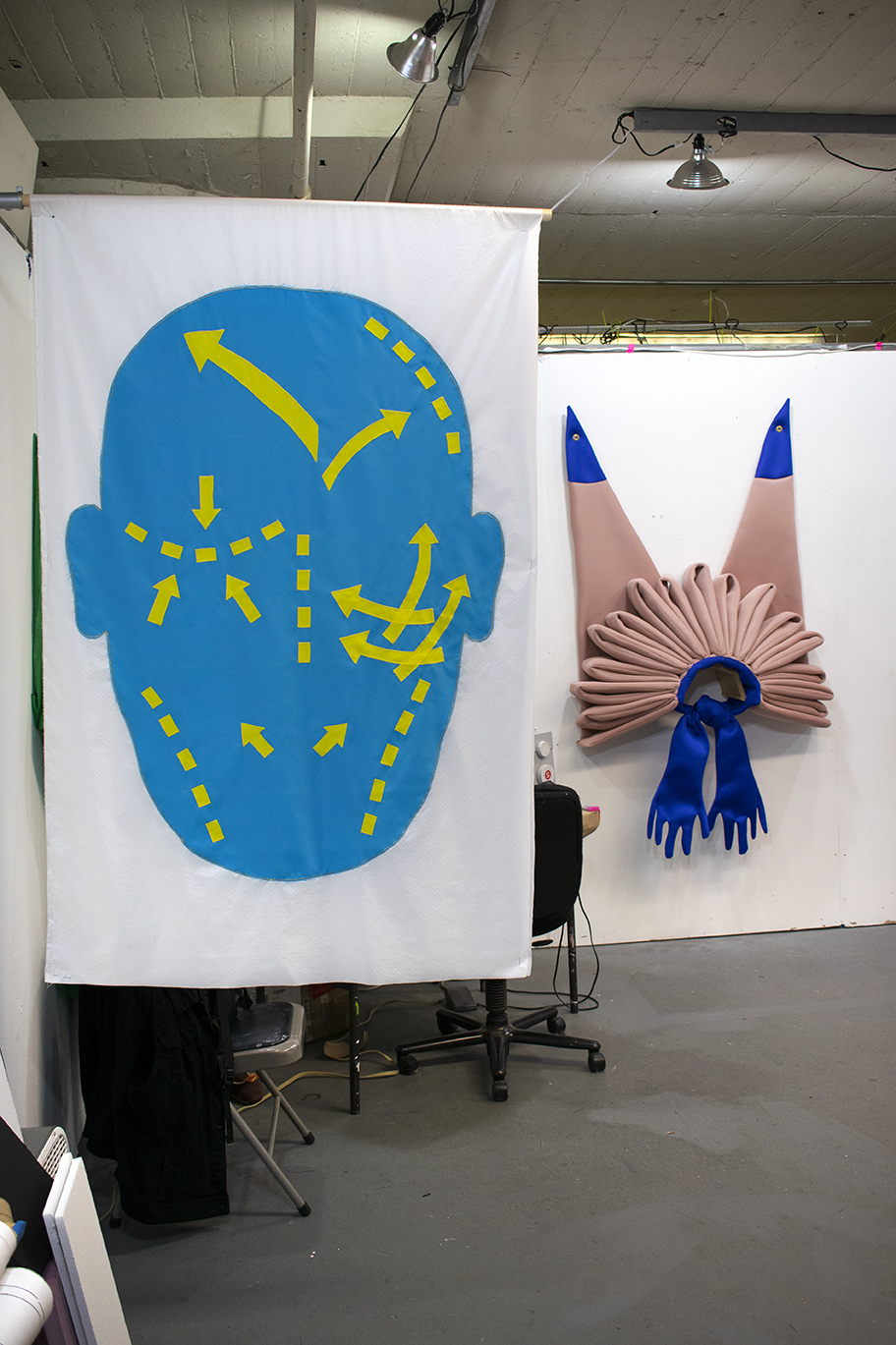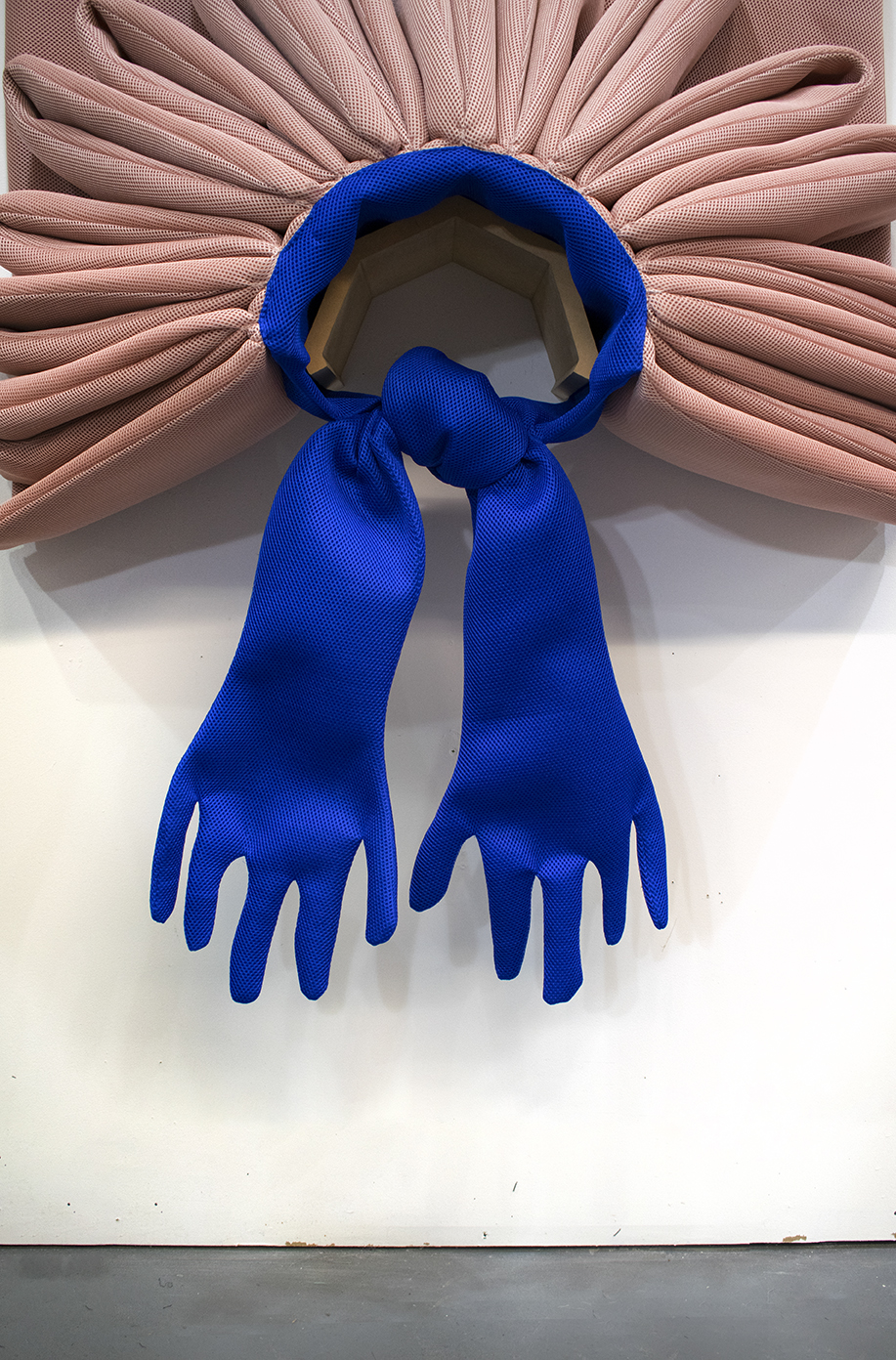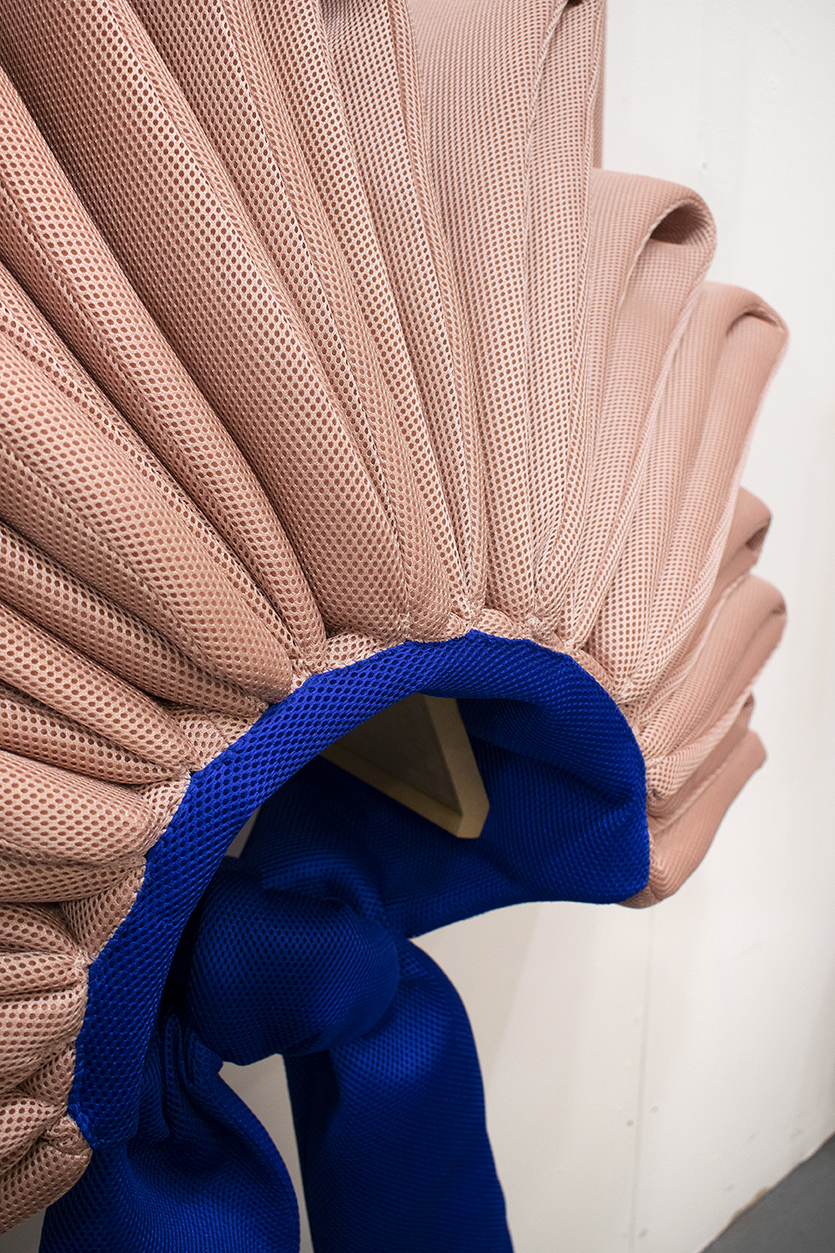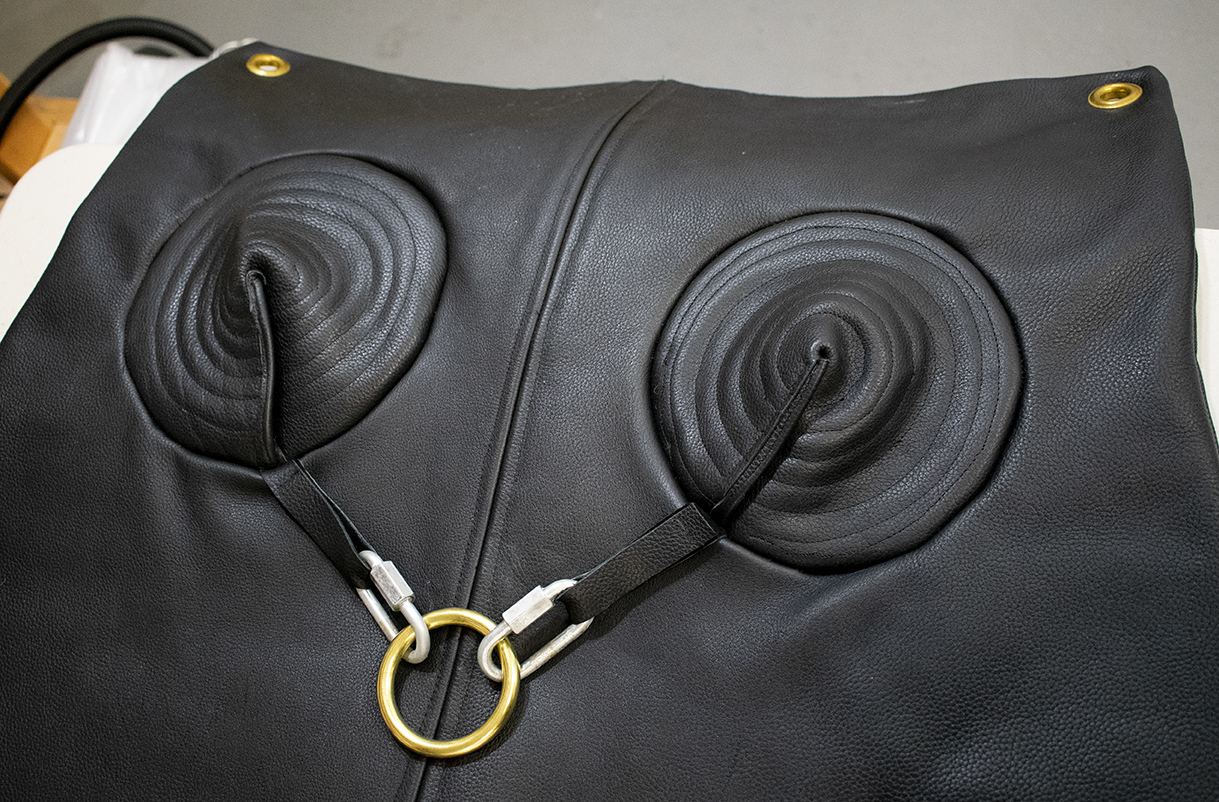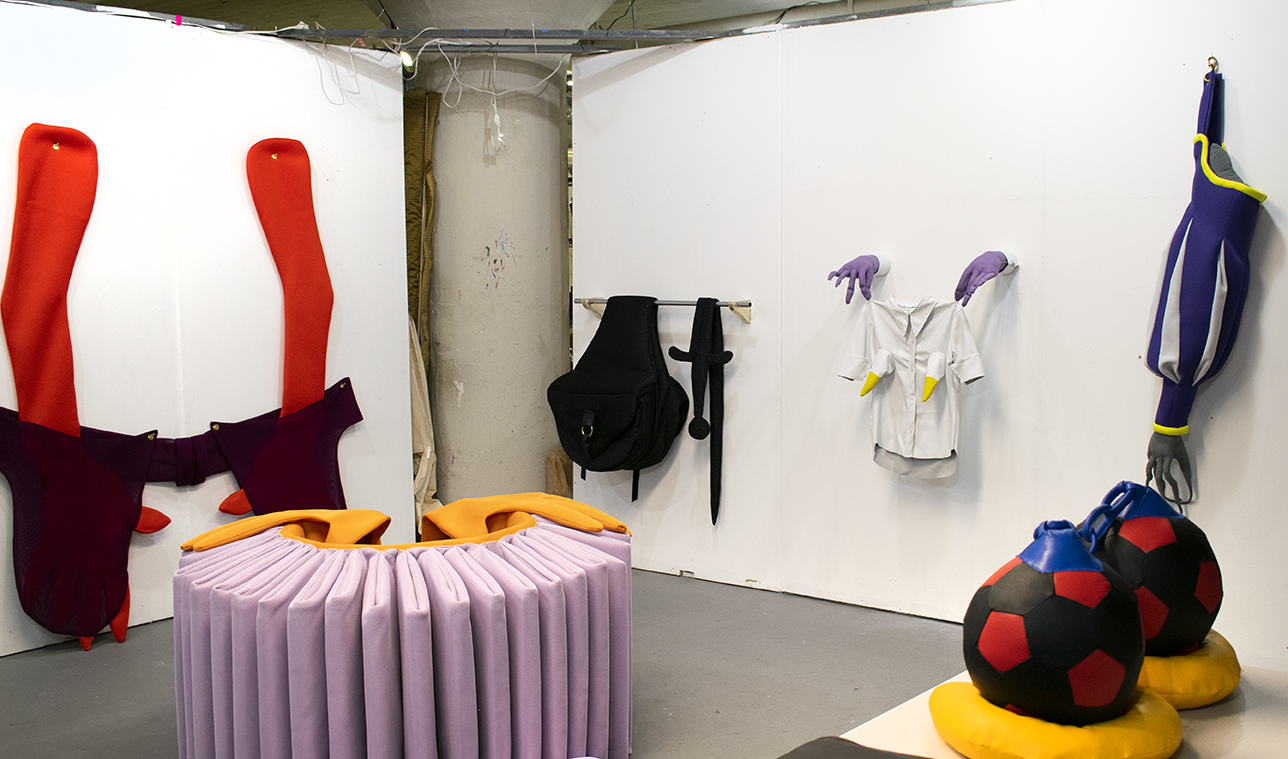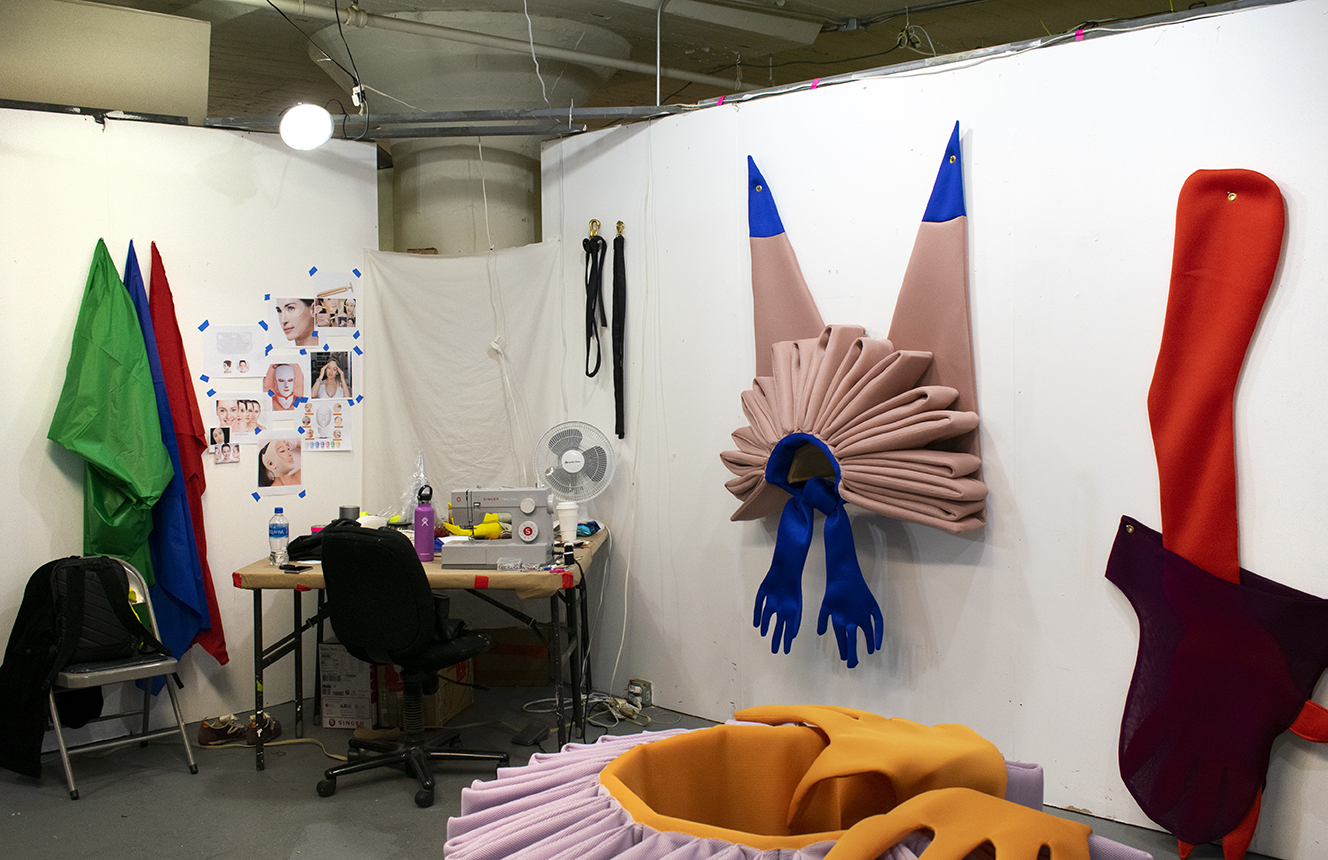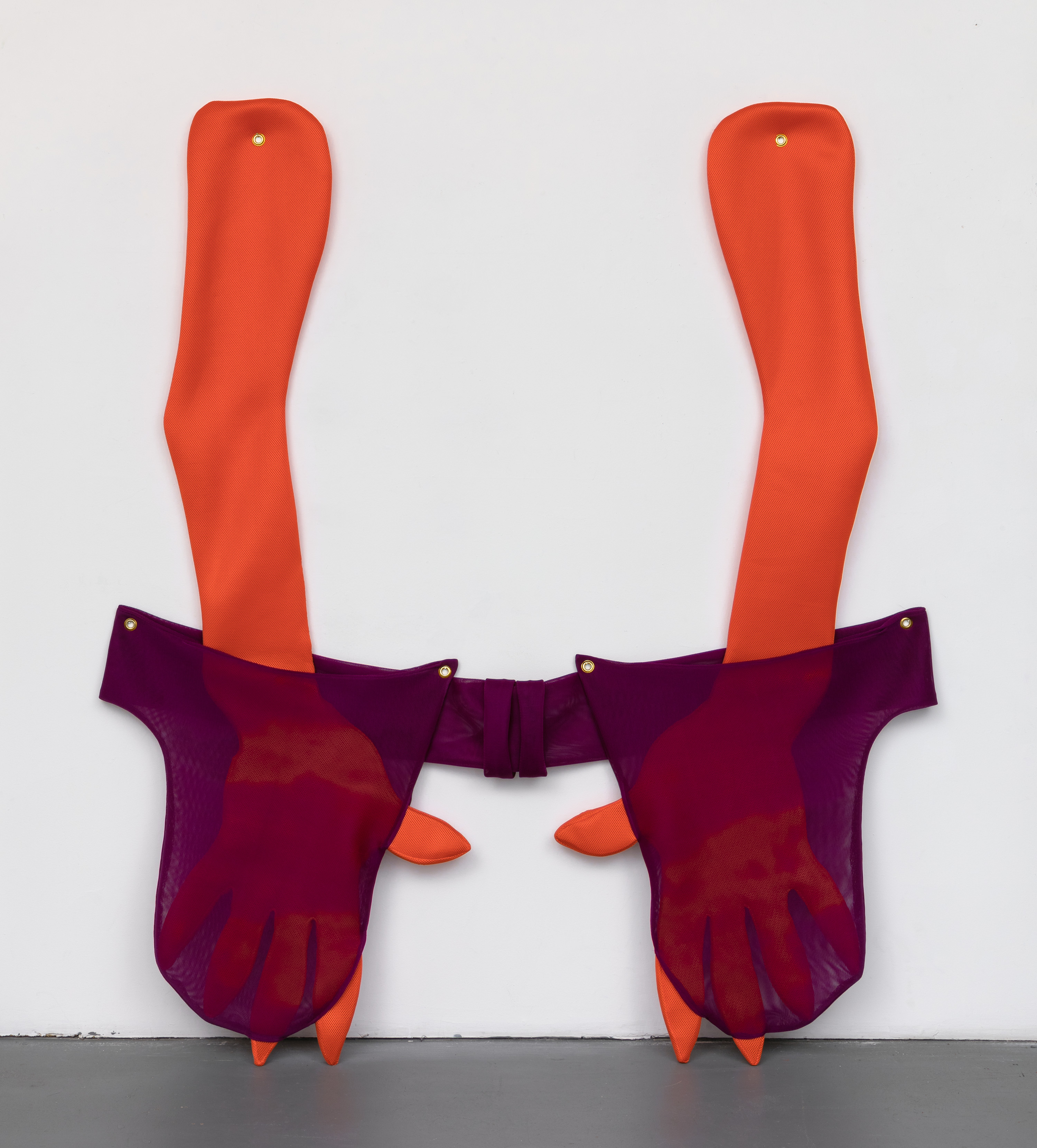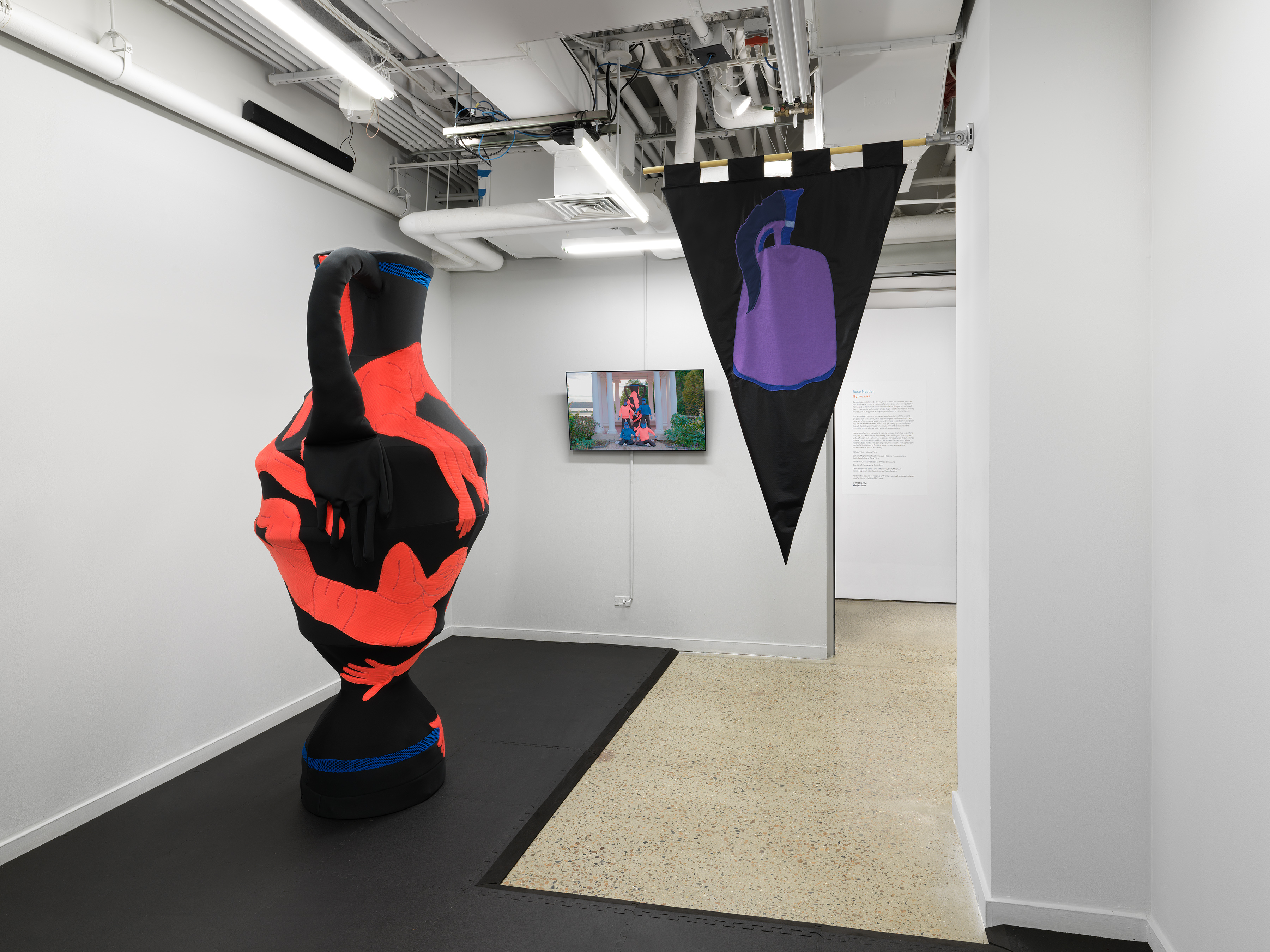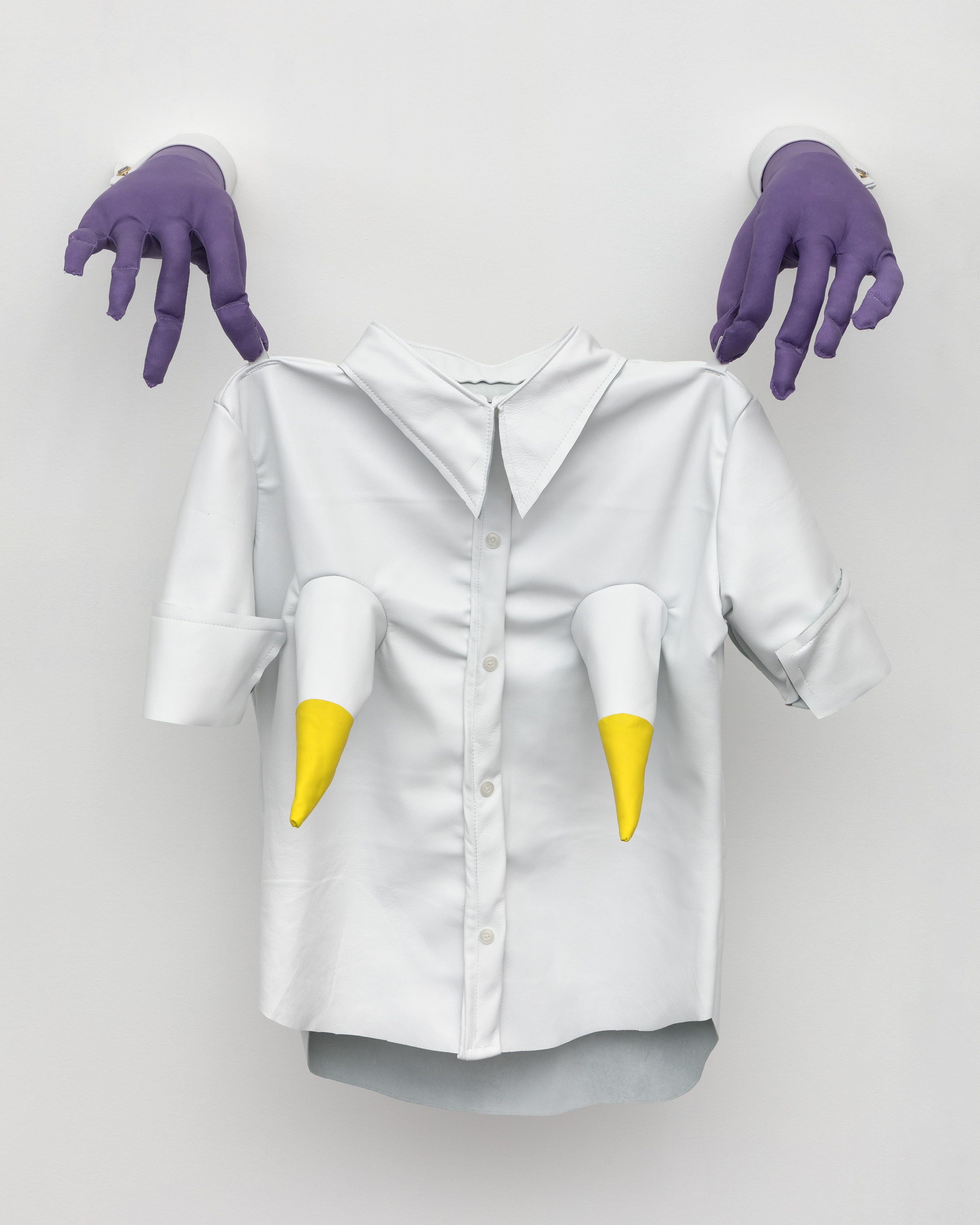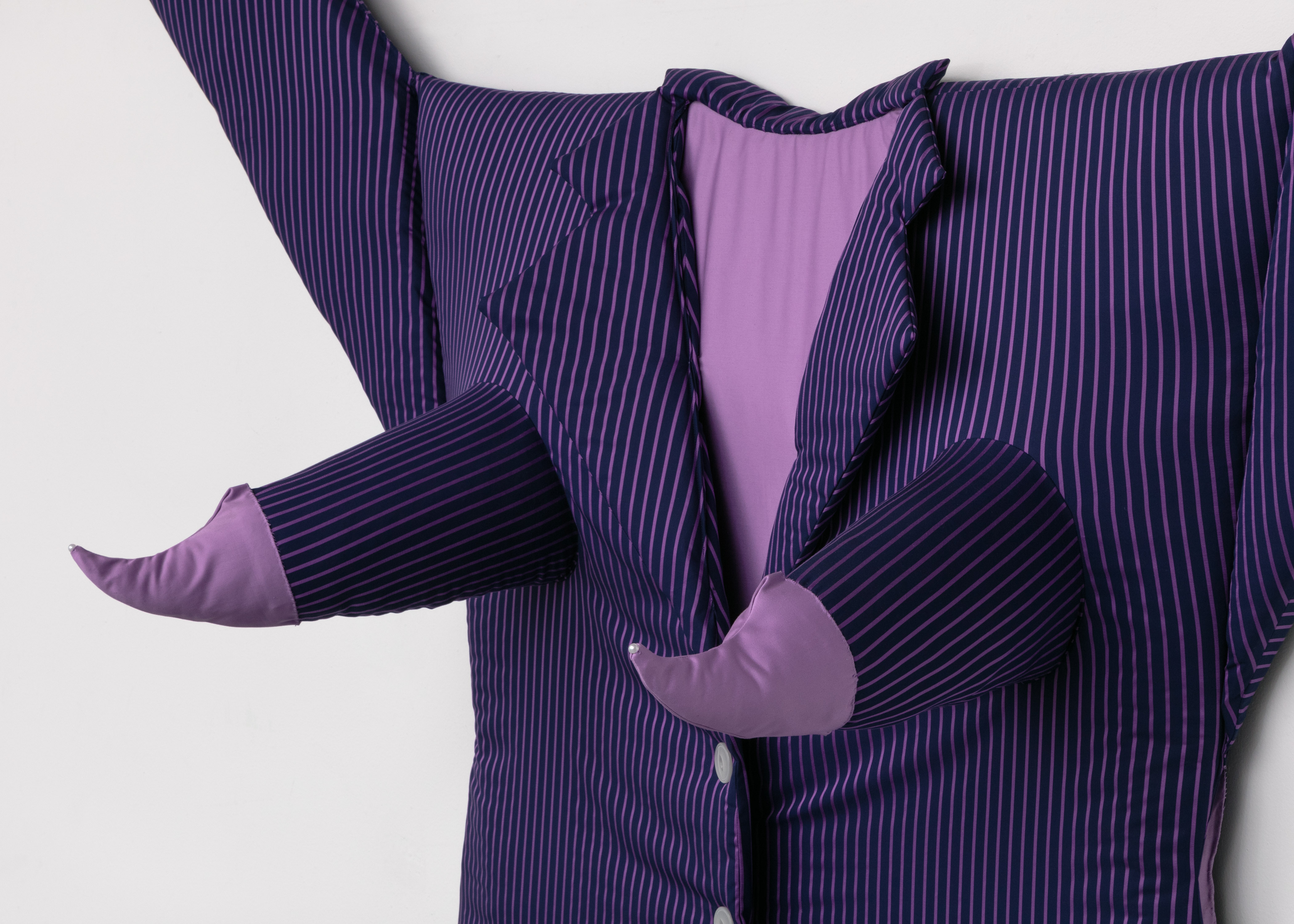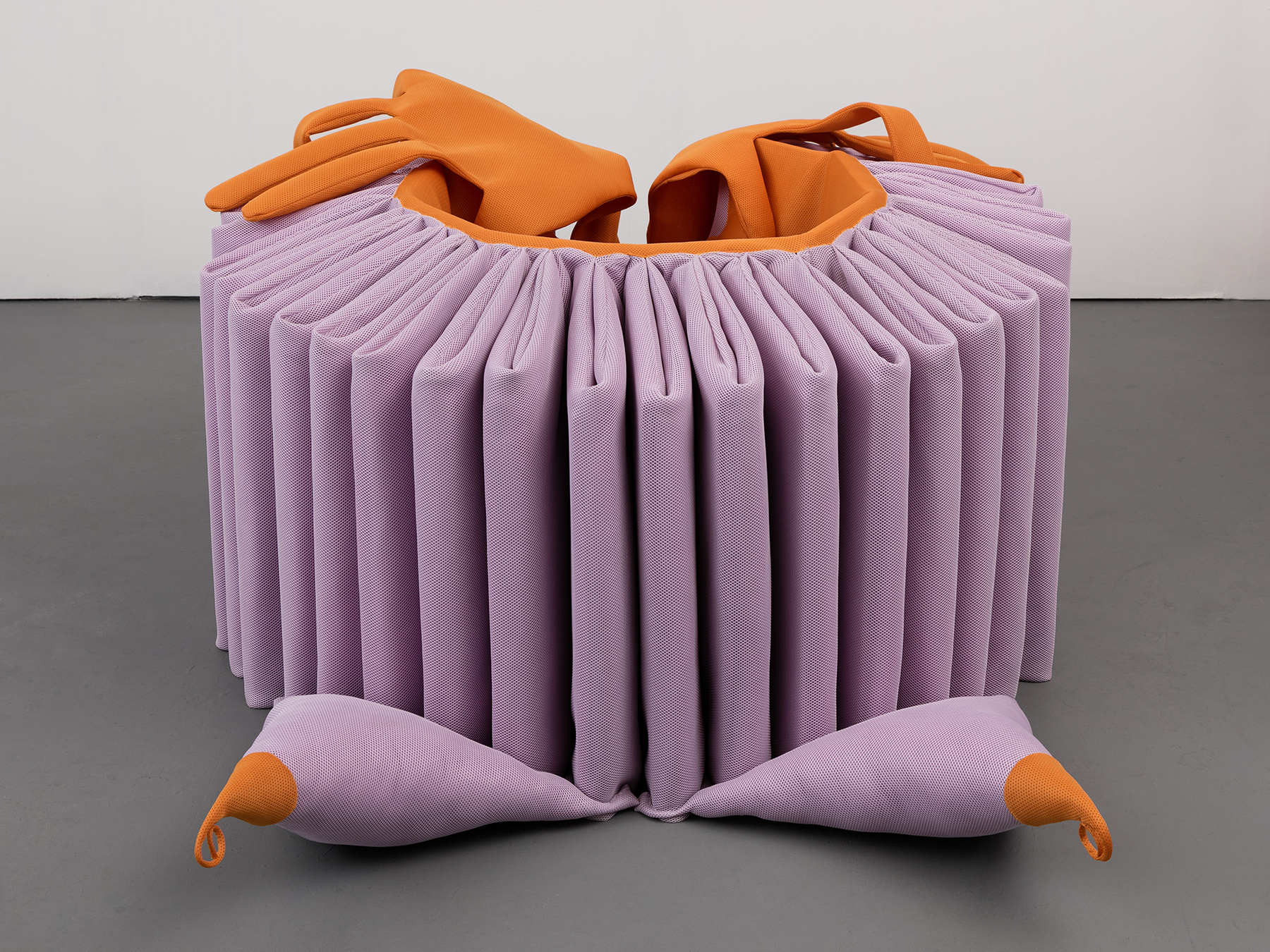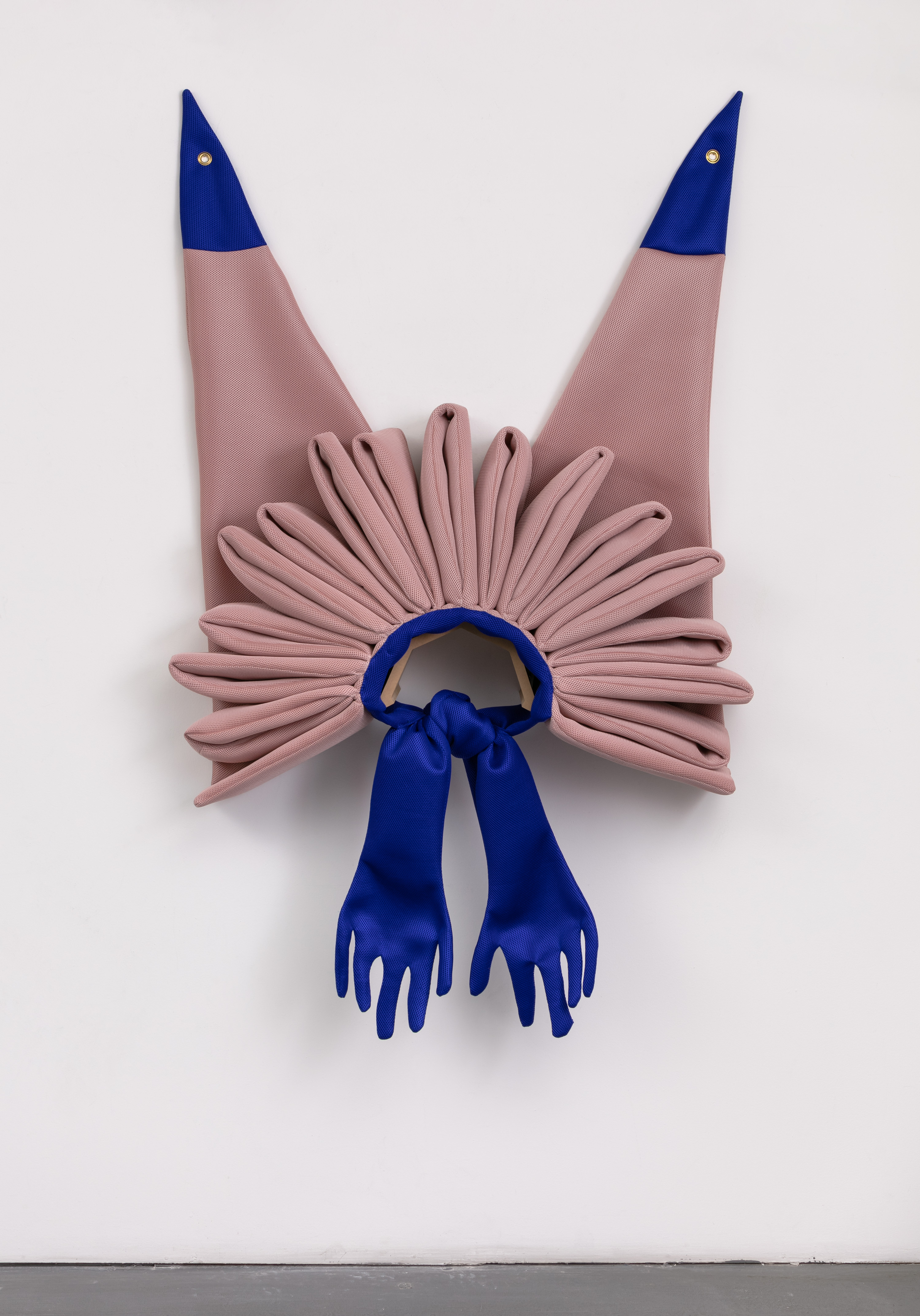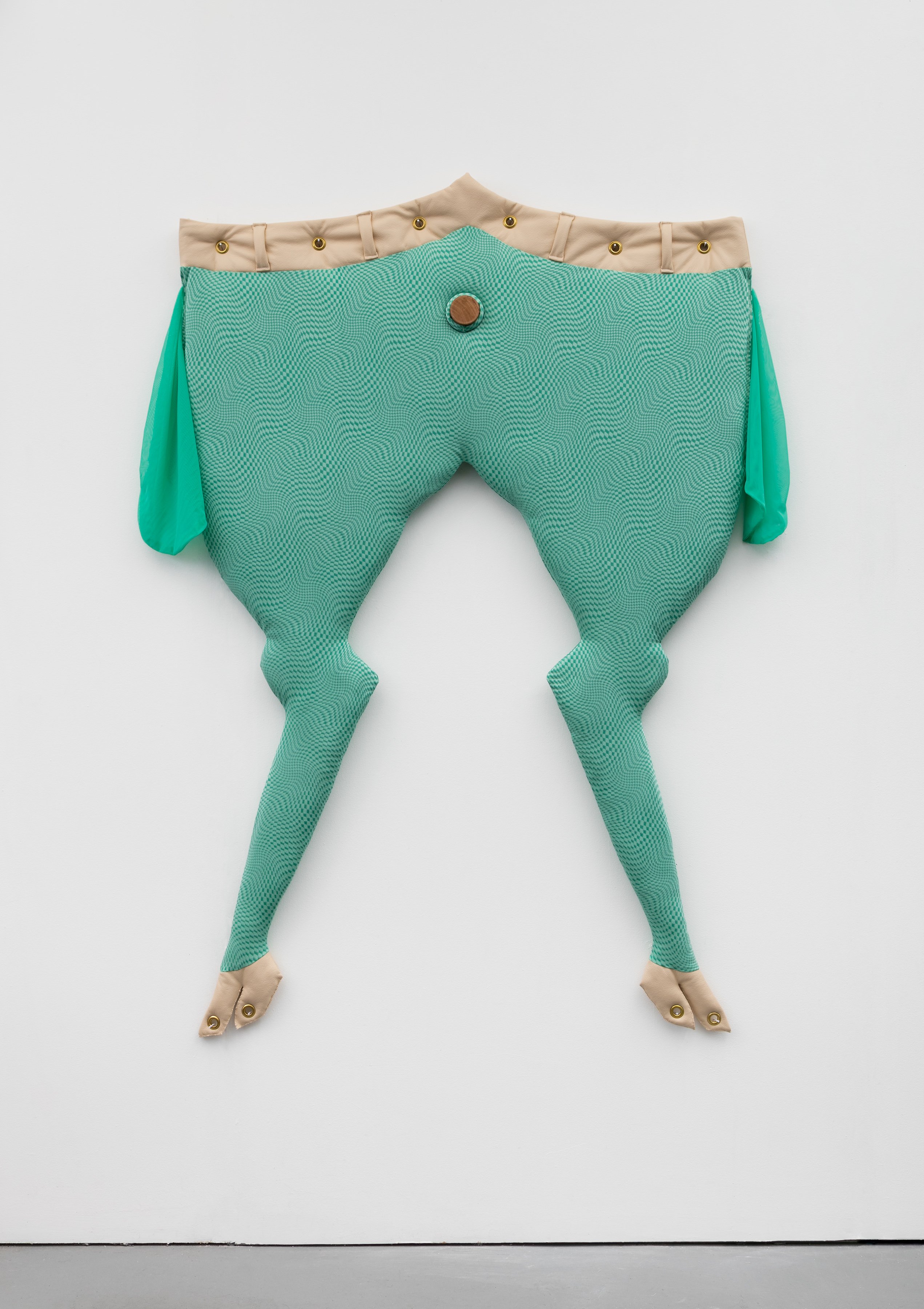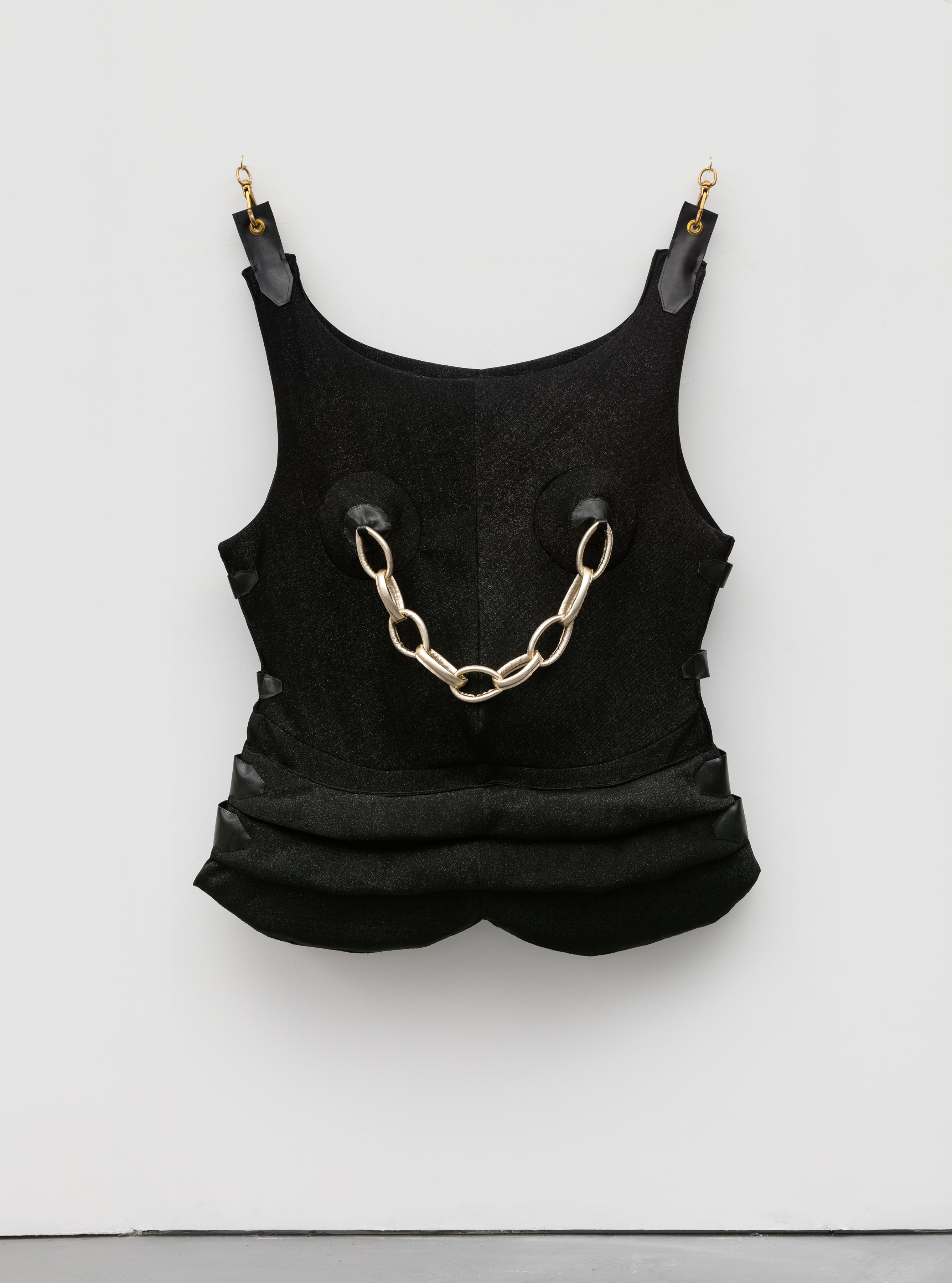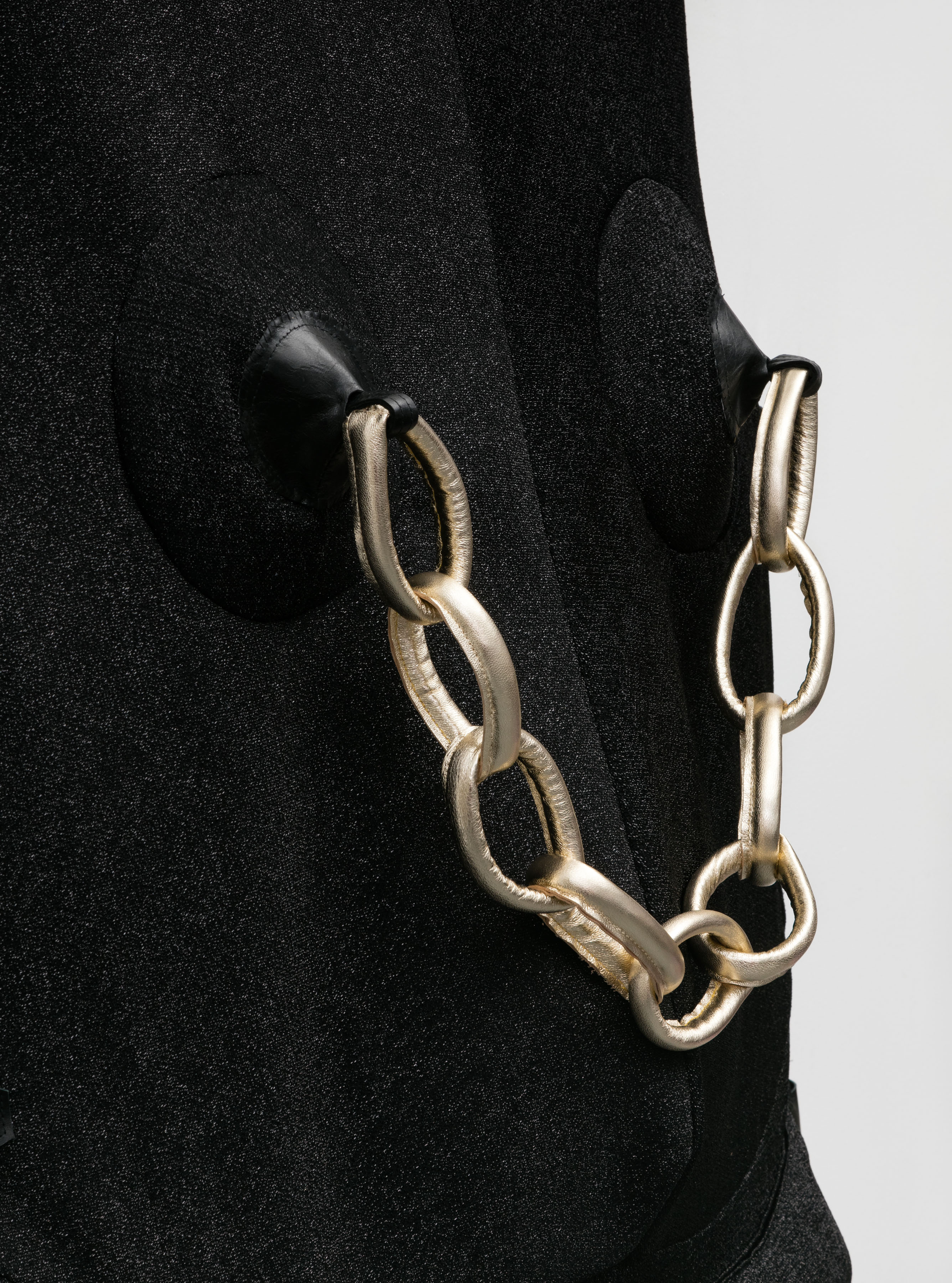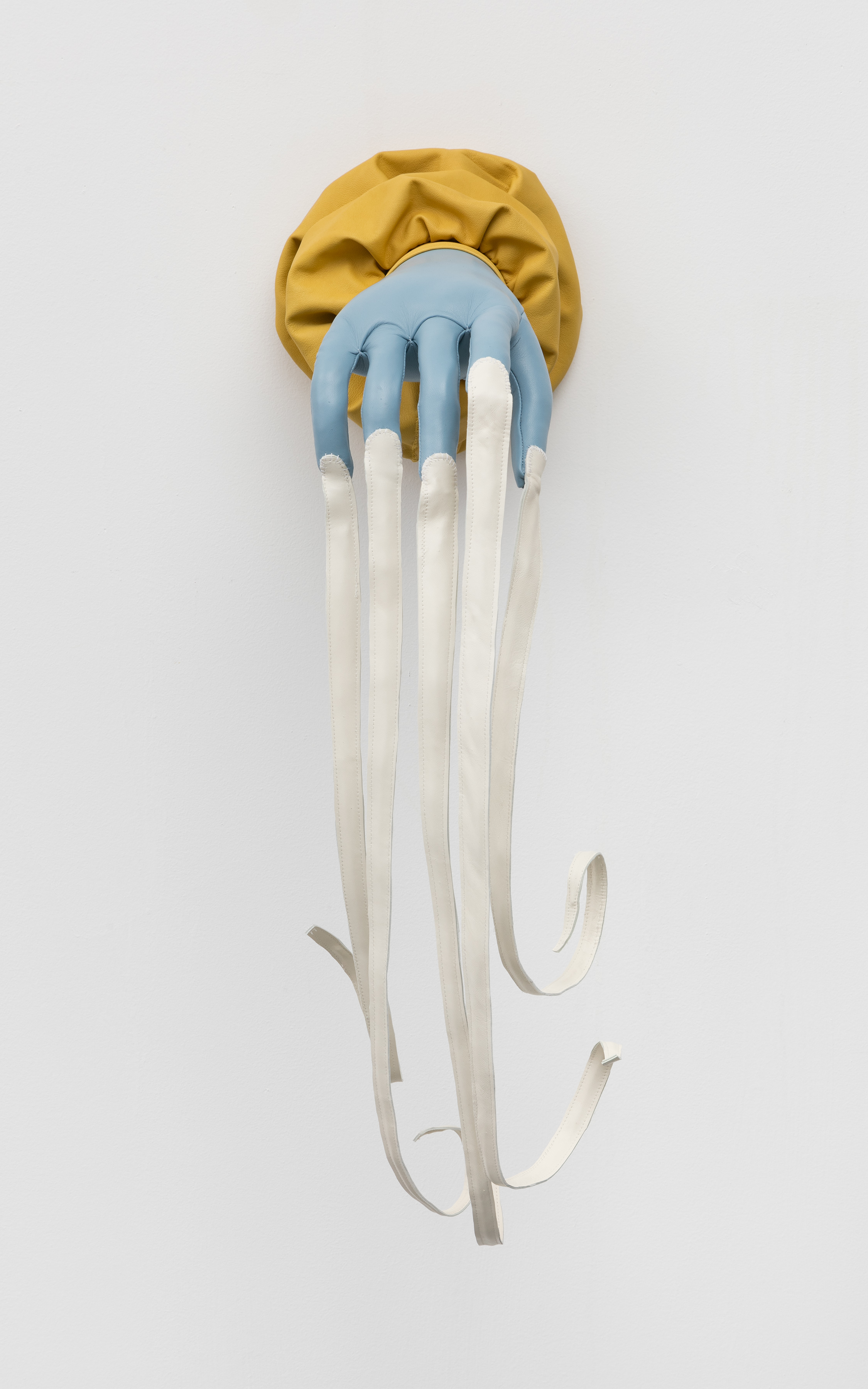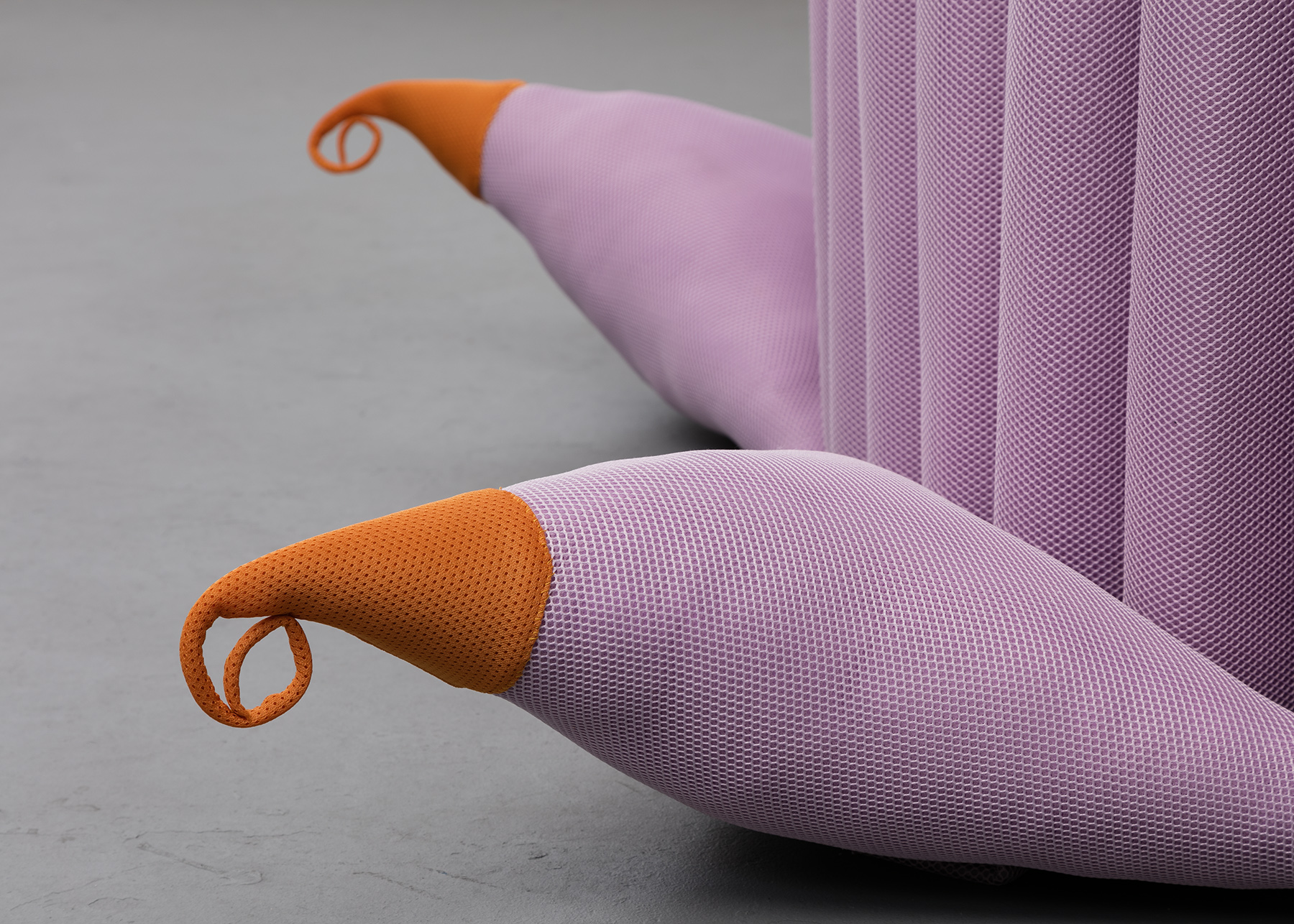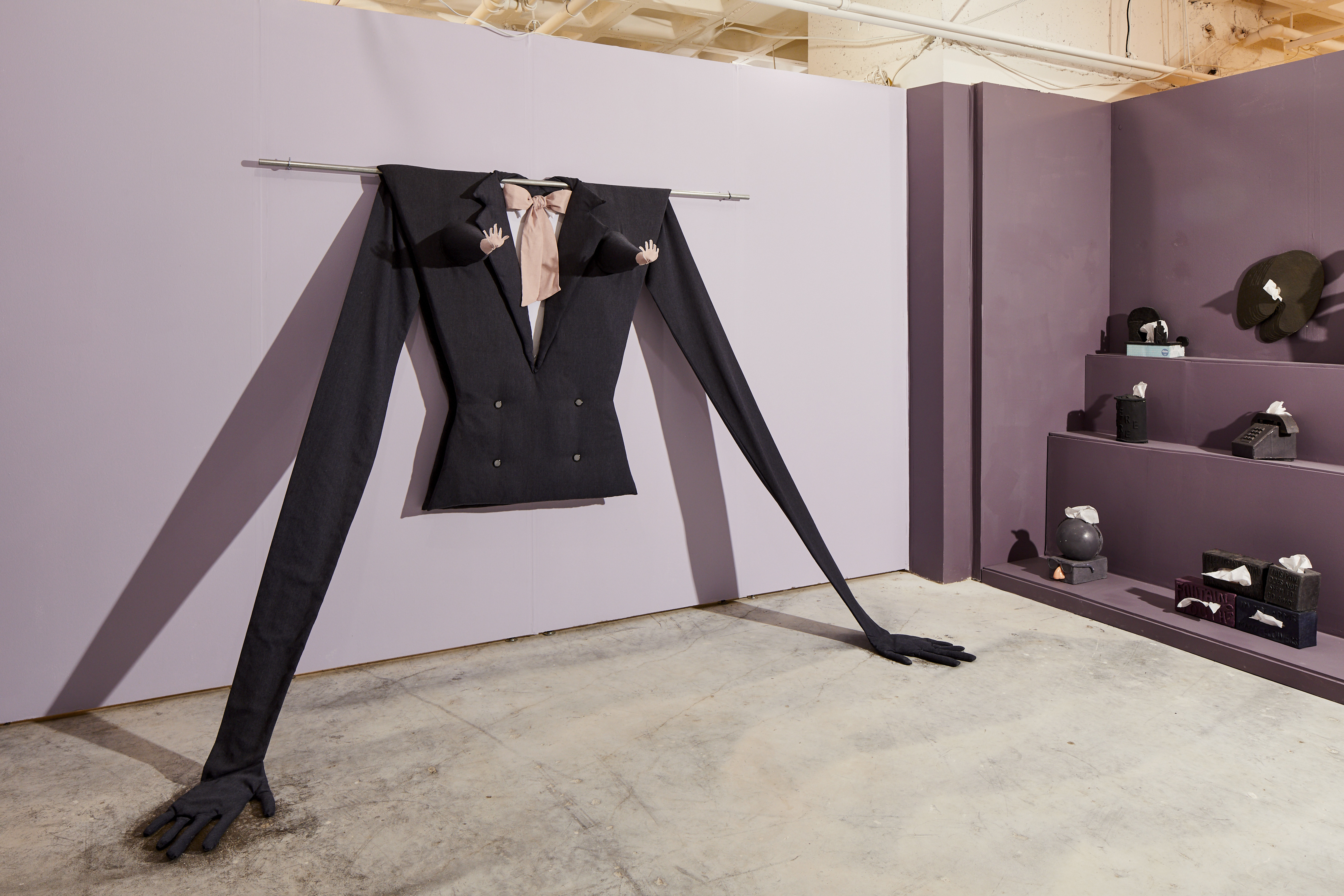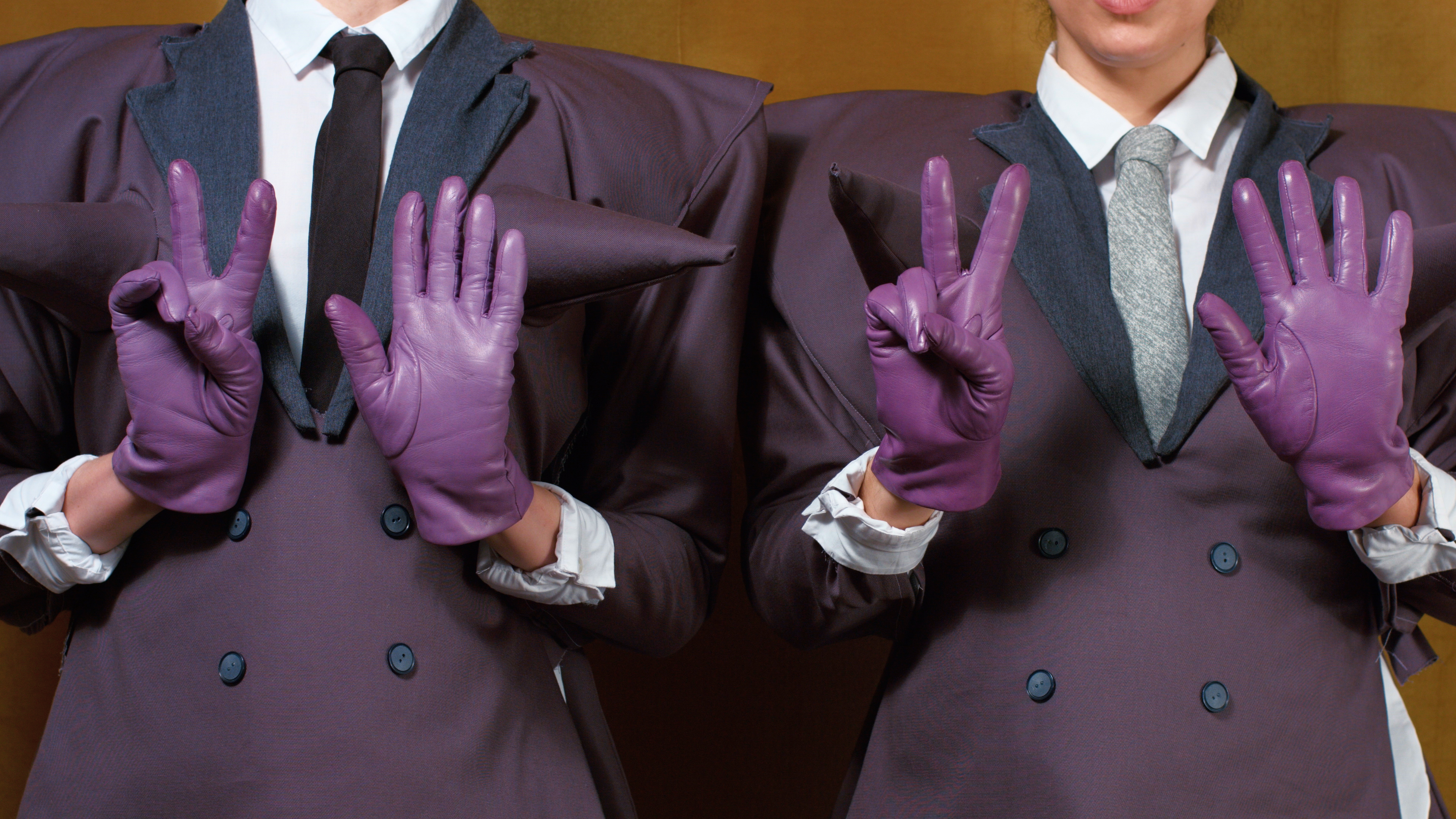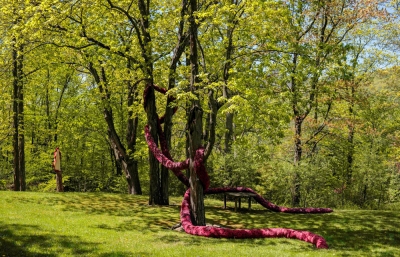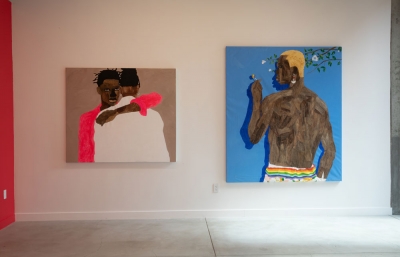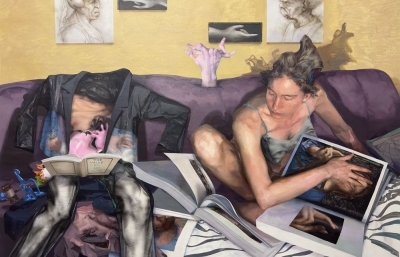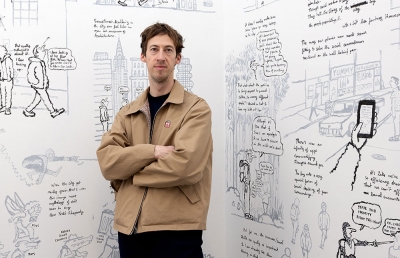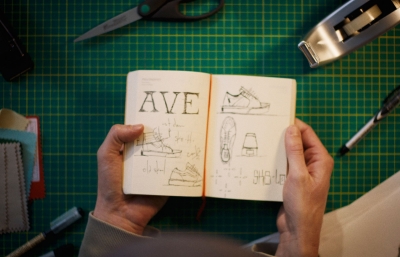What do your clothes say about you? Your identity? Your sense of self? What we wear has a lot to say about our collective culture, both past and present. It can be a tool of expression, a way to convey one's identity, a medium to connect. With that same potency in mind, fabrics and fashion can also be weaponized, used as a vehicle to uphold the patriarchal power dynamics that define us and the capitalist structures that oppress us. I would say historically, I’ve had an, at most, indifferent attitude towards the things I wear. I've not thought too deeply about the long, complicated histories of textiles, not accountable for my role as a consumer. In an accelerated industry, with fast fashion companies hurling 52 “micro seasons” at consumers every year, it’s a lot to unpack.

Another Set of Hands, 2019
Touching on these conversations in a fine art context is Brooklyn based artist Rose Nestler. Her fibrous works utilize designs and concepts found in fashion, yet she approaches her practice as a traditional sculptor, contextualizing her pieces in dialogue with one another, sometimes paired with performative video works that expand on themes in her work. She plays with scale and materiality to comment on functionality and aesthetics. Her more dominant works, sometimes multiple feet tall, are contrasted with softer, more gentle fabrics and colors.

Still from Gymnasia Excerpts
Utilizing techniques like pleating, draping and ruching, she’s able to converse in the language of fashion while creating objects and things that aren’t meant for commercial use or wear. Oversized leather shirts are detailed with pointy, neon yellow breasts while giant mitten hands rest gently in appropriately-sized mesh pockets.. It’s these moments in Nester’s work that are familiar, yet, at the same time, unsettling. Nestler’s sculptures are entirely approachable, colorful and at times humorous, still, she doesn’t stray away from the more serious topics surrounding fashion, it’s perpetuation of patriarchal systems and out-dated traditional gender norms and sexual expression.
Being in her studio this past fall, seeing her huge pieces in person, the materiality and scale of Nestler’s work simultaneously negated my own notions of soft sculpture and questioned my own relationship to my wardrobe, inciting a newfound curiosity and coercing the re-examination of my own relationship to fabric and fashion. Take a look below.

The Hand that Feeds, 2019
Jessica Ross: Let’s dive right in and talk about power. It can be immediately projected (or not) through the things we wear and how we wear them. Clothing, as you’ve said before, can denote confidence but it can also be used as a tool of dominance and power (ie. leather, latex, kink aesthetics) can you elaborate on some of your more assertive works and how they act as a way to either reclaim or redistribute power in a cultural sense?
Rose Nestler: I think you’re right in that the type of fabric/textile can completely change the inherent power within an item of clothing. Materials like leather and latex automatically boost the dominant quality of a garment. In addition to my choice of material, are the aggressive forms that my pieces often assume. I enjoy playing with a dichotomy where I can imbue demure or soft fabrics with power, based on the form the work takes. An example of this is my piece, Another Set of Hands, it’s made out of muted gray and pink linen, what makes it more assertive are its conical, weaponized breasts and the wide, weighted cast of its hands on the floor, clearing a space for itself. The reverse of this material/form relationship can be found in, The Hand That Feeds, this work is made entirely of leather, its form is softer and more languid than Another Set of Hands but what adds to the feral wildness of this piece is the kinky materiality of the leather.

Good Cheer (detail)
Clearly, scale is a big part of your work. Playing up or down certain aspects of your soft sculpture lend to its humor, importance, and message. When creating a new piece, do you consider the space or context on where it will be displayed or is it more about finding the appropriately sized space once the work is complete?
It depends, I prefer creating new pieces within an understanding of where and with whom or what they will be shown. Scaling up is part of my voice right now and I almost can’t help it, more often than not, I just go big, in the rare moment that I’m creating work without the venue in mind I try not to think about space limitations.

What sort of challenges do you face with soft sculpture in the studio? How has your approach to the medium changed over the years?
The challenges of working with fabric as a sculptural material involve a great deal of engineering to figure out ways to give strength, rigidity and balance to something that is fluid and flexible. I initially began working with soft sculpture in 2012, I was using upholstery techniques, then I began incorporating it in my work again during grad school in 2016. At first I was sewing very simple, 2 piece patterns and stuffing them with polyfill. Since then, I’ve become less interested in stuffing forms and increasingly curious about the potential fabric has to lend itself to taut and planar forms. As I move forward I’m depending a lot more on the armatures of my sculptures and wall hangings, using wood, steel, weights, foam, batting and hardware cloth to add strength and stoicism to the work.
Ideas of femininity and womanhood are ingrained in the fashions and fabrics of history, largely designed to confine and limit women’s bodies. How does your work explore those ideas, specifically through your sculpture and accompanying video and performance work?
Many of my Power Suit pieces have been reinterpretations of historic garments intended to shield, confine or restrict feminine bodies. Often, the clothing that I choose to reimagine is connected to masculine attire and a patriarchal ideal of power, examples of this include, business suits, armor, sports bras and jerseys. I’m most interested in garments and tools that women have utilized to protect and adapt their bodies while striving to compete within a society not built for them to succeed. Recently I have been most engaged with the tension between my own rejection of and simultaneous attraction to the material and form that these gendered garments and objects have assumed throughout history. What happens to these objects as feminine users instill them with their own omnipresent dissent and ultimate agency?
In my video Tying the Knot two characters lead a bow tie and necktie tutorial. They’re wearing suits modeled after my sculpture with conical breasts built-in. The sound for the piece is an ASMR-like dictation of found language taken from tie tutorials online. The language is eerily exclusive and the two figures in breasted suits and leather gloves are leading us through this masculine tradition with full uncanny confidence. I build breasts in my business suits as a way to take up space within a masculine culture; instead of hiding or restricting the feminine body I aim to instill it with a powerful defense.

still from Tying the Knot
When pairing your stoic sculptures to a video piece and or performance, what sort of cadence or tone are you trying to set? Is it mainly about injecting movement into your work or is it a way to level up the sculptures?
Adding video to my sculptural practice has been quite rewarding for me. I always felt a bit disappointed by sculpture’s inability to invoke time passing or movement (of course there are exceptions) but I needed it to do more. Video answered this dilemma in a way that I feel adds to my work. The ideal scenario for exhibiting my work involves objects, video and sound all in coexistence with one another. Through video, the objects that I create have a second life outside of the gallery setting.

It's Ruff Out There
What are some assumptions about your work and or soft sculpture, in general, you’d like to debunk or demystify?
Though I sometimes use it to describe my work, I feel mixed about the term soft sculpture. It almost feels like someone saying a show of “all women artists.” How about just “artist” and “sculpture”? I think language is really indicative of power imbalances, and “soft sculpture” tows that line for me. That said, I am in awe of and indebted to the rich tradition of many artists working with soft materials and in materials traditionally designated for craft who have paved the way for me to be able to insert my opinion on the topic. I do feel like working with soft materials that haven’t historically been used for sculpture is inherently rebellious because it pushes against the more macho aspects of sculpture as a discipline.
Athleisure doesn’t seem to be going anywhere anytime soon, although it seems unrelated to an overall spike in fitness and health. When you incorporate mesh and spandex and rayon materials in your work, is it a way to comment on the practicality and efficiency of those fabrics and how they’ve been co-opted as a trend? Or is there something else, a larger conversation to be had?
It’s both! I love working with tech fabrics because they are manufactured to perform, they stretch, they compress, they’re waterproof and they’re often more sculptural than other fabrics. As I’m regularly drawn to high key, sports colors, athleisure materials fit in nicely. On a conceptual level I’m interested in the larger symbolism of the industry - athleisure is intended to perform some function, therefore helping the wearer to perform their best - whether they’re an athlete or not, it’s the potential for success that I’m intrigued with. In addition to the layered formal/functional /symbolic qualities of these garments, I’m curious about how athleisure is marketed towards and consumed by women. There is a dualism between wearing athletic wear to exercise, sweat and almost become invisible as a feminine body - and on the flip side a lot of athleisure is worn with the intention of being seen in a sexier way. We make choices in how and why we wear things and that’s why it’s such an abundant material trend for me to unpack in my work.

Often, Louise Bourgeois’s sculptures were intense, frightening and confrontational, while simultaneously dealing with themes of domesticity, gender, sexuality and motherhood. On that note, do you think your work hashes through tough discussions about anxiety and trauma through the lens of approachable, soft and sometimes humorous work like your own?
I think you’re correct, a lot of the work that I make addresses trauma through a darkly humorous lens. When I choose not to stuff or fill a form, just to leave it open, flaccid and hanging - those are the saddest or most shameful pieces for me. There’s humor there because we all know the feeling of being deflated, powerless and exhausted. However there’s also a darkness to these limp forms and I think that’s because they’re connected to anxiety and pain on a more intimate and private level, we deflate and let go of our protective fronts when we‘re alone and maybe these pieces of mine are illustrative of that experience. I don’t intend for my work to be funny but it often ends up that way and I’m glad for it because humor makes abominable things more digestible and connects us with one another in the process.

Can you elaborate a little bit on the face masks and head shaper things I saw in your studio? What are they and how have they found their way into your work?
Ah, the creepy beauty masks! Yes. I’m working toward a new body of work for an upcoming solo show. In 2017 I began making these face flags - brightly colored nylon appliqué pieces with abstracted faces illustrating diagrams for plastic surgery, Botox & fillers, makeup contouring and facial massage - the facial features are absent and there are pathways of arrows, dashes and shapes mounted on silhouette cutouts of faces. Making the flags expanded into researching all of the strange and beautiful products that are marketed to me as an aging woman including, LED masks, silicone wrinkle pads, chin lift straps, cryogenic facial massagers, gua sha stones, etc. The title of this upcoming project is Work Done and it centers around the objects, materials and experiences tied up in our societies’ preoccupation with youth and immortality. Within this obsession, I am most interested in the ways this plays out on the female face and how it connects to one’s livelihood. What adjustments are made to protect, succeed and ultimately compete in a capitalist and patriarchal society? The show will consist of sculptures and multi-channel video works...stay tuned!

What do you have coming up in 2020? Where can we see more of your work in person?
I will be an artist in residence at Joan Mitchell Center in New Orleans this spring which I’m really looking forward to! In April I will be in a small group show about hyperbolic tools at Paradice Palase in Brooklyn. Coming up this fall I will have a solo show in San Francisco at Incline Gallery curated by Andrea Nitsche Krupp and will be part of a three person show at Projet Pangée in Montreal.
Follow Rose Nestler on Instagram // Studio Images and Interview by Jessica Ross. // All other images courtesy of the artist.

